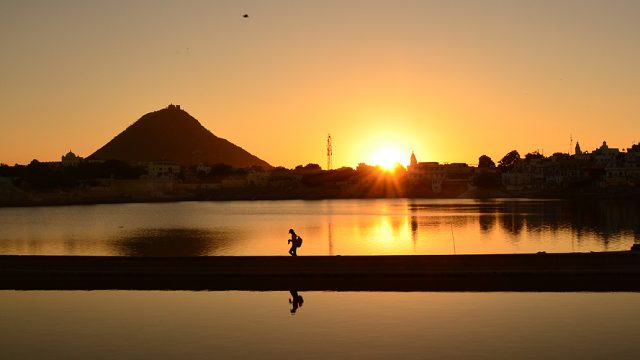Melody emanated from the strings of ravanahatha was completely in sync with the swaying marigold garlands hanging from the banyan tree. The lakeside teemed with activities—devotees offering prayers, a troupe of traditional musicians warming up, domestic visitors finding themselves drawn to the ghats, some dancing-swaying-hoola-hooping hippies. Here and there musicians played their instruments, providing great photo-ops—Pushkar Lake was a sight to behold and a place to be in. I was there for Shree Cement The Sacred Pushkar festival (December 16-17). Surrounding the sacred lake are 10 ghats—the Varaha Ghat, the Dadhich Ghat, Saptarishi Ghats, Gwalior Ghat, Kota Ghat, Gau ghat, Yag Ghat, Jaipur Ghat, Karni Ghat and Gangaur Ghat. I had some time to spare before the musical evening started, so I decided to take a walk along the ghats. The lake seemed to come to life in ways only one can understand, depending on what you choose to observe. For me, the combination of music, the story of Brahma, the nip in the air, faces and people’s movements closed the deal. The ethereal world of Pushkar is no poetic imagination.
Pushkar: The Sacred Affair
At The Sacred Pushkar festival, the ancient holy city comes to life with the best of music, meditation and sunset

Pushkar: The Sacred Affair
Pushkar: The Sacred Affair



